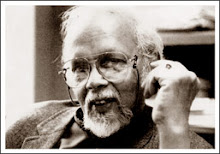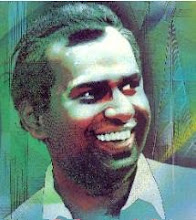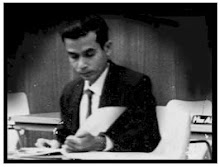Source: Daily News
Date: 08/08/2007
Lanka Children's and Youth Theatre Foundation will present the Colombo Theatre Festival for Young Audiences at the Lionel Wendt Theatre, Colombo 7 from August 9-12. The theme of the festival is "Theatre for Education and Reconciliation." THEATRE: The Lanka Children's and Youth Theatre Organisation (LCYTF) or Play House-Kotte which was established as a voluntary organisation in 1981 by veteran playwright and theatre director Somalatha Subasinghe.
Over the years LCYTF has produced a repertoire of internationally acclaimed mainly musical theatre for children and youth and award winning mainstream theatre productions. Today LCTYF is the leading producer of theatre for children and youth, and one of the major training and skill development centres for actors and other creative professionals in Sri Lanka. With its theatre productions over the years, LCYRF has also been able to set new standards for the Sri Lankan theatre.
The objective of the Colombo Theatre Festival for Young Audiences 2007 is to provide a platform in particular for young theatre directors to showcase their productions to the public. On the other hand it will also be a
| 
DISTORTION:Vikurthi actors in action |
valuable opportunity for the public to experience theatre with meaningful entertainment both in the categories of original creations and adaptations from the international theatre.
When selecting the plays for the festival the only prerequisite that was taken into account is the merit of creativity of the production. Therefore, the underlying idea of this selection process is to promote high quality theatre productions by young directors.
Accordingly, four plays have been selected for the festival. They are "Vikurthi" (Distortion) by Somalatha Subasinghe, "Sanda Langa Maranaya" (Blood Wedding) by Kaushalya Fernando, "Asinamali " (Nothing to Lose) by Pujitha de Mel and "Me Heeneta Namak Denna" (Name This Dream) by Priyantha Kaluaarachchi. All these productions are national award winning pieces with deep-insights into the socio-cultural issues.
" (Nothing to Lose) by Pujitha de Mel and "Me Heeneta Namak Denna" (Name This Dream) by Priyantha Kaluaarachchi. All these productions are national award winning pieces with deep-insights into the socio-cultural issues.
Somalatha Subasinghe
New categories
Plans are already under way to make this festival the most looked forward to in August in the future by adding a few new categories such as theatre for children, short plays by young directors and plays from the South Asian Region. This in turn will make Colombo a significant location for showcasing high quality theatre productions with meaningful entertainment in the South Asian region.
Schedule of the festival
Vikurthi (Distortion) by Somalatha Subasinghe August 9, 3.30 pm and 7.00 pm. Me Heeneta Namak Denna (Name This Dream) by Priyantha Kaluarachchi. August 10, 3.30 pm and 7.00 pm.
Asinamali (Nothing to Lose) by Pujitha de Mel August 11, 3.30 pm and 7.00 pm. Sanda Langa Maranaya (Blood Wedding) by Kaushalya Fernando August 12, 3.30 pm and 7.00 pm.
Vikurthi
Vikurthi (Distortion) is a play by Somalatha Subasinghe, a satirical exposure of hapless generation of youth whose lives were dominated by incessant struggle between the parents' aspirations and the youth's abilities and preferences.
In the 1980s, at the time the drama was conceived, the widespread social tendency was that the aspiring parents trying to achieve the missed opportunities of their own lives through their children. Consequently, the children were forced to study for competitive government examinations such as GCE (O/L) and GCE (A/L), specifically in the Science Stream disregarding their aptitudes and available resources at respective schools and the universities.
The play discusses in-depth how this anti-social process denied youth of their own life, which in turn deeply affects them in many ways.
Vikurthi cast includes Chamila Peiris, Namal Jayasinghe, Nadee Kammallaweera, Wishvajith Gunesekara, Mayura Kanchana, Suresh Fernando, Nayomi Gunasiri, Sharmaine Gunaratne, Sanjaya Hettiarachchi, Ishara Wickramasinghe, Hiran Abeysekera, Prasannajith Abeysuriya and a number of newcomers to the national theatre groomed at Play House-Kotte.
The play is written and directed by Somalatha Subasinghe, M.R. Chulasinghe composed music for the play. Choreography is by Somalatha Subasinghe and Chandana Aluthge. Stage lighting is by Chandana Aluthge and make-up is by Sumedha Hewawitharana.
Me Heeneta Namak Denna
Priyantha Kaluaarachchi's Me Heeneta Namak Denna (Name This Dream) has the theme of the youth's realization of the reality of modern day life. Dhamma is a young television producer who loves his profession very much.
He perceives his work as his life. This creative youth's sudden and unexpected transfer to a bottle manufacturing plant by the holding company which also owns the Television channel turns his world upside down. Stressed out by this turn of events, Dhamma even attempts to commit suicide. At that moment he encounters all his life's expectations in a dream. The play evolves around the dream and reality of the protagonist.
Me Heeneta Namak Denna cast consists of Namal Jayasinghe, Dayadeva Edirisinghe, Sampath Jayaweera, Athula Pathirana and Samanali Fonseka. Music of the drama is composed by Kapila Poogalaarachchi. Stage decor and costumes are by Pradeep Chandrasiri. Make-up is by Bhanu Prasanna.
Lighting is by Chandana Authge and Stage management by Hewage Bandula and the drama is written and directed by Priyantha Kaluaarchchi.
Asinamali
Pujitha de Mel's "Asinamali" is the Sinhala production of the South African playwright Mbongeni Ngema's Asinamali.
It has a greater relevance to the contemporary post-colonial world. The term 'Asinamali' could be literary translated as a political slogan 'Nothing to Lose' which has a history associated with the South African struggle against Apartheid. A minimum number of actors playing multiple roles in one stage setting, a salient characteristic of Ngema's plays is appropriated by Pujitha in his production.
The story of the play revolves around a union of five prisoners from diverse parts of South Africa in a cell at Leeuwkop Prison zealously guarded by Afrikaana-speaking police. Within the confines of the prison, the audience is taken to far flung hamlets of South Africa when the incarcerated prisoners relate their experiences, their former lives, political ideology, mentors and their crimes.
Asinamali was adjudged the best play of the year at National Drama Festival in 2001. Asinamali cast comprises Wishvajith Gunasekera, Dharmapriya Dias, Sanjaya Hettiarachchi, Namal Jayasinghe and Nissanka Madulaarachchi.
Music for the drama is composed by Theja Buddhika Rodrigo. Stage decor is by Namal Jayasinghe. Make-up is by Sumedha Hewavitharana. Lighting is by Kapila Aluthge and Stage management is by Nissanka Madulaarachchi and the drama is directed by Pujitha de Mel.
Sanda Langa Maranaya
Kaushalya Fernando's "Sanda Langa Maranaya", is the Sinhala version of Blood Wedding. Blood Wedding, one of the famous trilogy based upon Spanish society, written by Federico Garcia Lorca in response to a news paper article concerning a local murder in rural Spain.
The story of the play is a triangle of passionate love among a bridegroom, a married man and a young bride. The play basically is a tragedy of missed love, focusing certain universal themes such as extremism, intolerance, and inflexibility in society which makes it relevant for all times.
The production is a semi-musical-surrealistic-type which is a familiar theatrical experience to the local audiences. The choreographed movements, music and rhythm, and vivid lighting and colours in addition to very intense acting on stage impart an entertaining yet intense theatre encounter. Sanda Langa Maranaya was adjudged the best play of the year at National Drama Festival in 2005.
Sanda Langa Maranaya cast includes Somalatha Subasinghe, Lucian Bulathsinghala, Chamila Peries, Wishvajith Gunasekera, Prasanna Mahagamage, Mayura Kanchana, Nadee Kammallaweera, Suresh Fernando, Nayomi Gunasiri, Lakmini Seneviratne, Sharamaine Gunaratne, Sanjaya Hettiarachchi, Champika Kannangara, Ishara Wickramasinghe, Hiran Abeysekera and a number of newcomers to the national theatre groomed at Play House-Kotte.
Nadeeka Guruge composed music for the play. Choreographed movements and stage lighting are by Chandana Aluthge. Stage sets and properties are by Namal Jayasinghe while make-up is by Sumedha Hewawitharana. Stage management is by Aruna Jayasena and Shameen Athuraliya.




 Play House - Kotte, the leading Children’s theatre, presents a two day Theatre Festival for the young Audiences on December 5 and 6, 2008, at the Lionel Wendt at 3.30 p.m. and 6.30 p.m respectively. The theatre’s latest creation ‘Walas Pawula’ (The Bears and Goldilocks) as well as the well received Punchi Apata Den Therei (We Know It Now) and “Toppi Welenda” (The Hat Seller) will be showcased on these days.. The festival is sponsored by the HNB Assurance PLC (for the third consecutive year) to promote Children’s Theatre in Sri Lanka and thereby contribute to the well being of the country’s future generation.
Play House - Kotte, the leading Children’s theatre, presents a two day Theatre Festival for the young Audiences on December 5 and 6, 2008, at the Lionel Wendt at 3.30 p.m. and 6.30 p.m respectively. The theatre’s latest creation ‘Walas Pawula’ (The Bears and Goldilocks) as well as the well received Punchi Apata Den Therei (We Know It Now) and “Toppi Welenda” (The Hat Seller) will be showcased on these days.. The festival is sponsored by the HNB Assurance PLC (for the third consecutive year) to promote Children’s Theatre in Sri Lanka and thereby contribute to the well being of the country’s future generation.








































